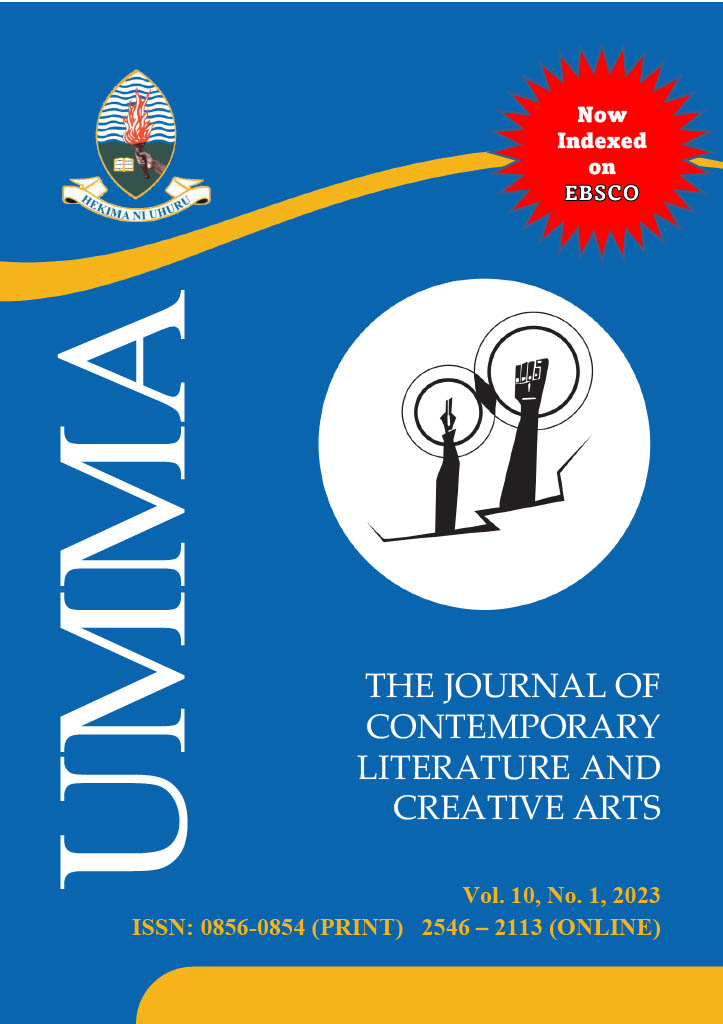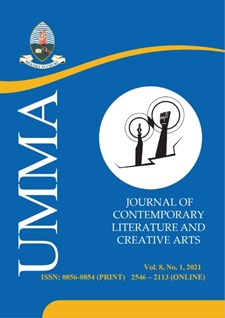A Counter Reading of Globalised Children ' s Literature in Mollel ' s Books
Abstract
This article analyses the perceptions of an African audience of books written about Africa published and mostly sold in the west working on the assumption that they primarily target a Western audience. Drawing insights from postcolonial and children ' s literature scholars, the study sought to bring into the conversation the voice of the otherwise marginalised population; African children who are represented in these texts. Based on ethnographic studies conducted in Dar es Salaam amongst primary school students, students and staff from the University of Dar es Salaam, and some staff from the Children ' s Books Project focusing on Mollel Tolowa ' s seven books. The primary aim was to get perceptions from a Tanzanian audience. Both young and older readers alike highly spoke of the quality and for having a relatively fair representation of Tanzania. On the other hand, the readers observed strongly that these books were.
Keywords:
African children ' s literature, Mollel Tolowa, African audience https://dx.doi.org/10.56279/ummaj.v10i1.4
References
Achebe, C. 2001, Home and exile, Edinburgh, Canongate.
Ambatchew, D. M. 2011, International communities building places for youth reading. Wolf, S.A. Coats, K. Enciso, P and Jenkins, C.A. eds. Handbook of Research on Children ' s and Young Adult Literature, New York, Routledge.
Children ' s Book Project for Tanzania.
Labbo, D. L., Field, L. S. 1998, Visiting South Africa through children ' s literature: Is it worth the trip? South African educators provide the answer, The Reading Teacher, vol. 51, pp. 464-75.
McGillis, R. 1999, Voices of the other: Children ' s literature and the postcolonial context. New York, Garland Publishing Inc.
Martinez, M. C. 2000, Bilingual students ' responses to multicultural children ' s literature on discrimination, The Dragon Lode vol. 18, no. 2, pp. 17-23.
Mollel, M. T. 1997, Kele ' s secret. illus. Catherine Stock, New York, Dutton.
Mollel, M. T. 1995, Big boy. illus. E. B. Lewis, New York, Claron.
Mollel, M. T. 1999, My rows and piles of coins. E. B. illus. Lewis, New York, Clarion.
Mollel, M.T. 1990, The orphan boy. illus. Paul Morin, New York, Clarion.
Mollel, M.T. 1998, Shadow dance. illus. Donna Perrone, New York, Clarion.
Mollel, M.T. 1998, Kitoto the mighty. illus. Kristi Frost, Toronto, Stoddart Kids.
Mollel, M.T. 2000, Subira subira. illus. Linda Saport, New York, Clarion.
Nathenson-Meija, S. 2003, Connecting with Latino children: Bridging cultural gaps with children ' s literature, Bilingual Research Journal, vol. 27, no. 1, pp. 101-116.
Okereke, A. 2003, The globalisation of African literature: Continuity, change, and adaptation, Globalizing Africa, Ed. Malnda, S. Smith. Trenton, NJ: Africa WP, 499-510.
Patton, Q. M. 2002, Qualitative research and evaluation methods, 3rd ed, Thousand Oaks, CA, Sage.
Silkiluwasha, M. Y. M. 2012, Alterity in hybridity: Examining the impact of globalization on African children ' s literature through the works of Tololwa M. Mollel, Sankofa: A Journal of African Children ' s and Young Adult Literature, vol. 11, pp. 36-45.
The Tanzania Education Network. "Literacy in Tanzania." <http://WWW.tenmet.org/public>
Yenika-Agbaw, V. 2008, Representing Africa in children ' s literature, New York, Routledge.
Zeleza, P. T. 2003, Rethinking globalization: The intellectual challenges, Trenton, NJ, Africa WP.
Downloads
Published
Issue
Section
License
- Authors retain copyright and grant the journal right of first publication with the work simultaneously licensed under a Creative Commons Attribution License that allows others to share the work with an acknowledgement of the work's authorship and initial publication in this journal.
- Authors are able to enter into separate, additional contractual arrangements for the non-exclusive distribution of the journal's published version of the work (e.g., post it to an institutional repository or publish it in a book), with an acknowledgement of its initial publication in this journal.
- Authors are permitted and encouraged to post their work online (e.g., in institutional repositories or on their website) prior to and during the submission process, as it can lead to productive exchanges, as well as earlier and greater citation of published work (See The Effect of Open Access).



